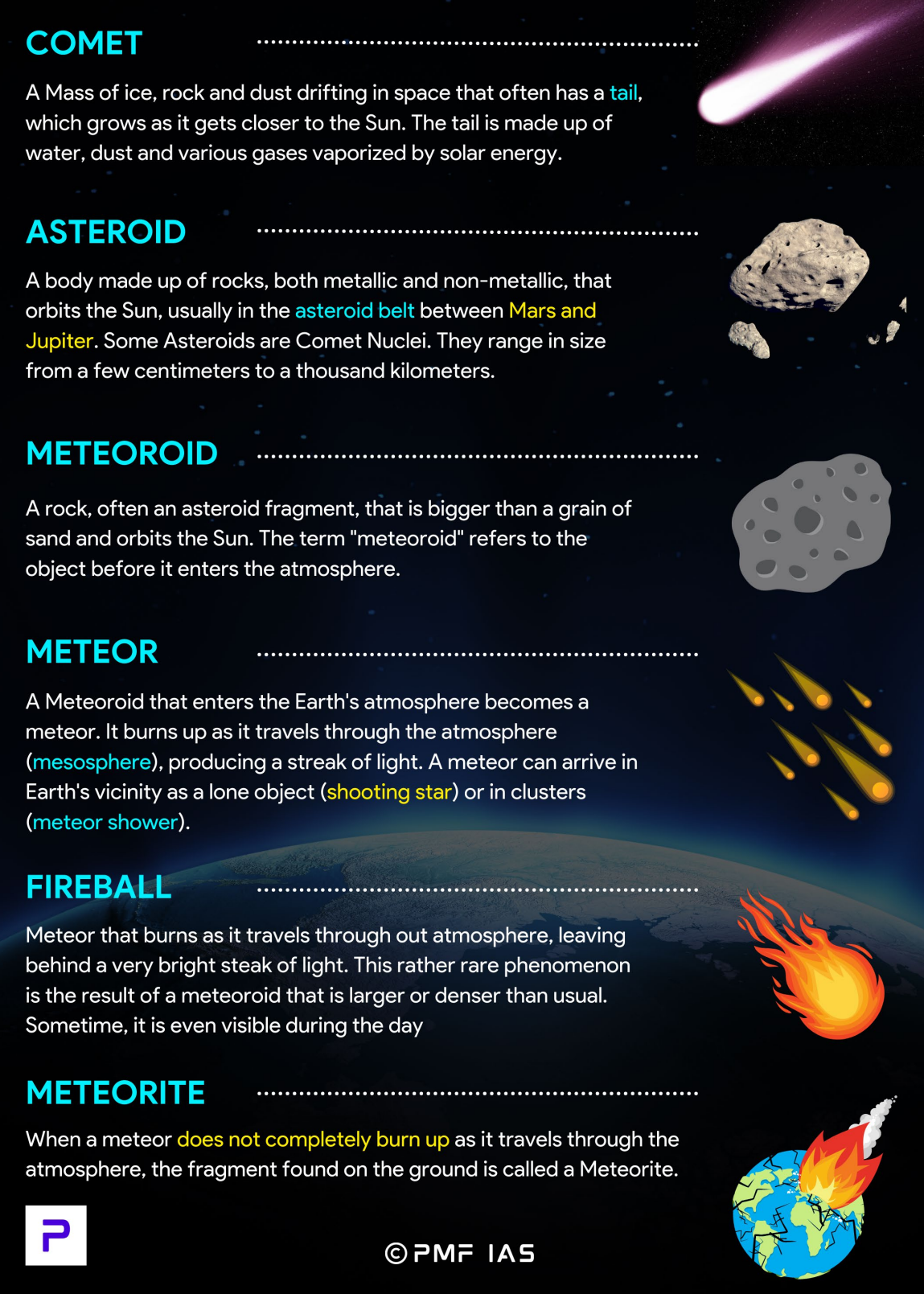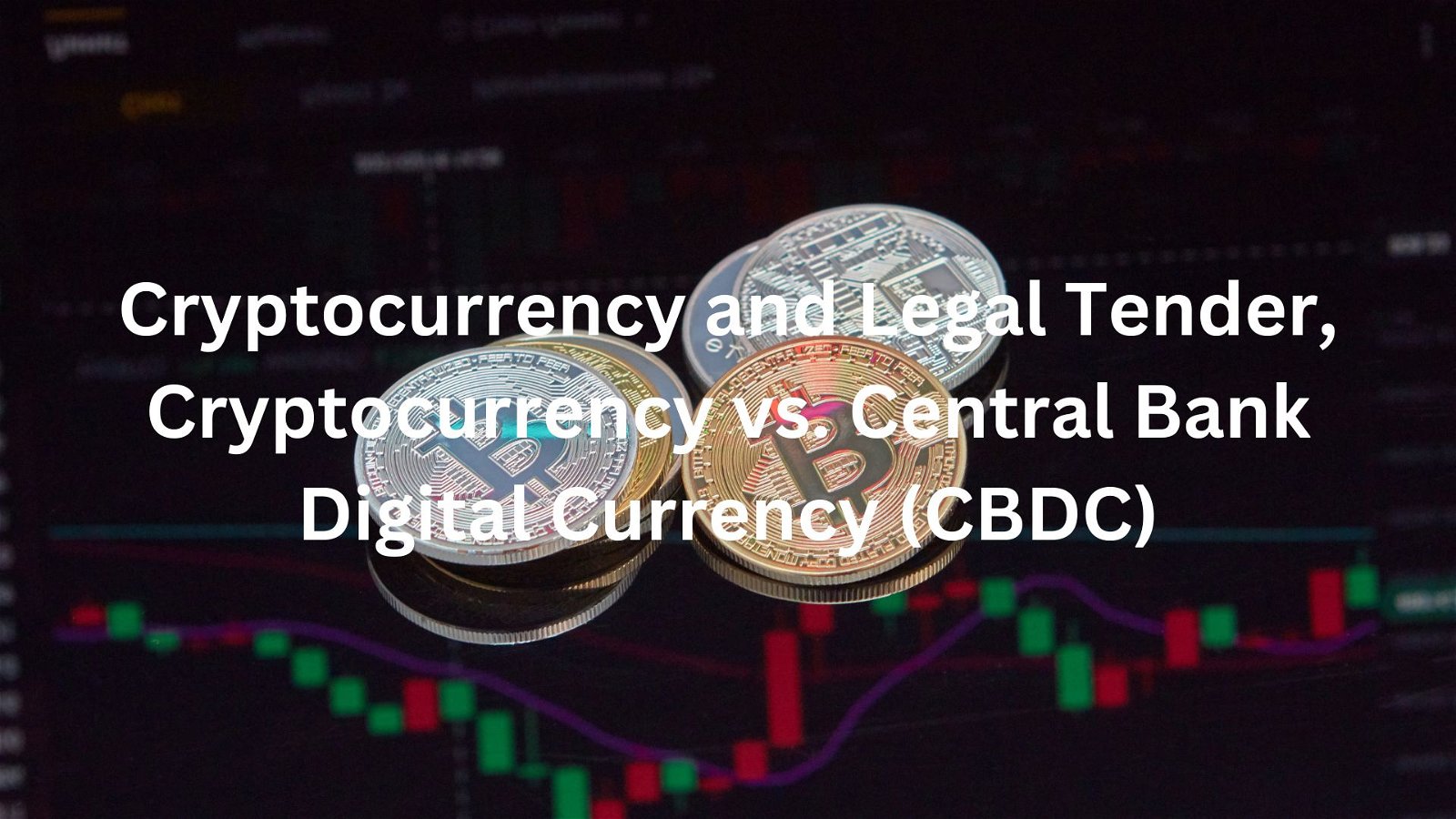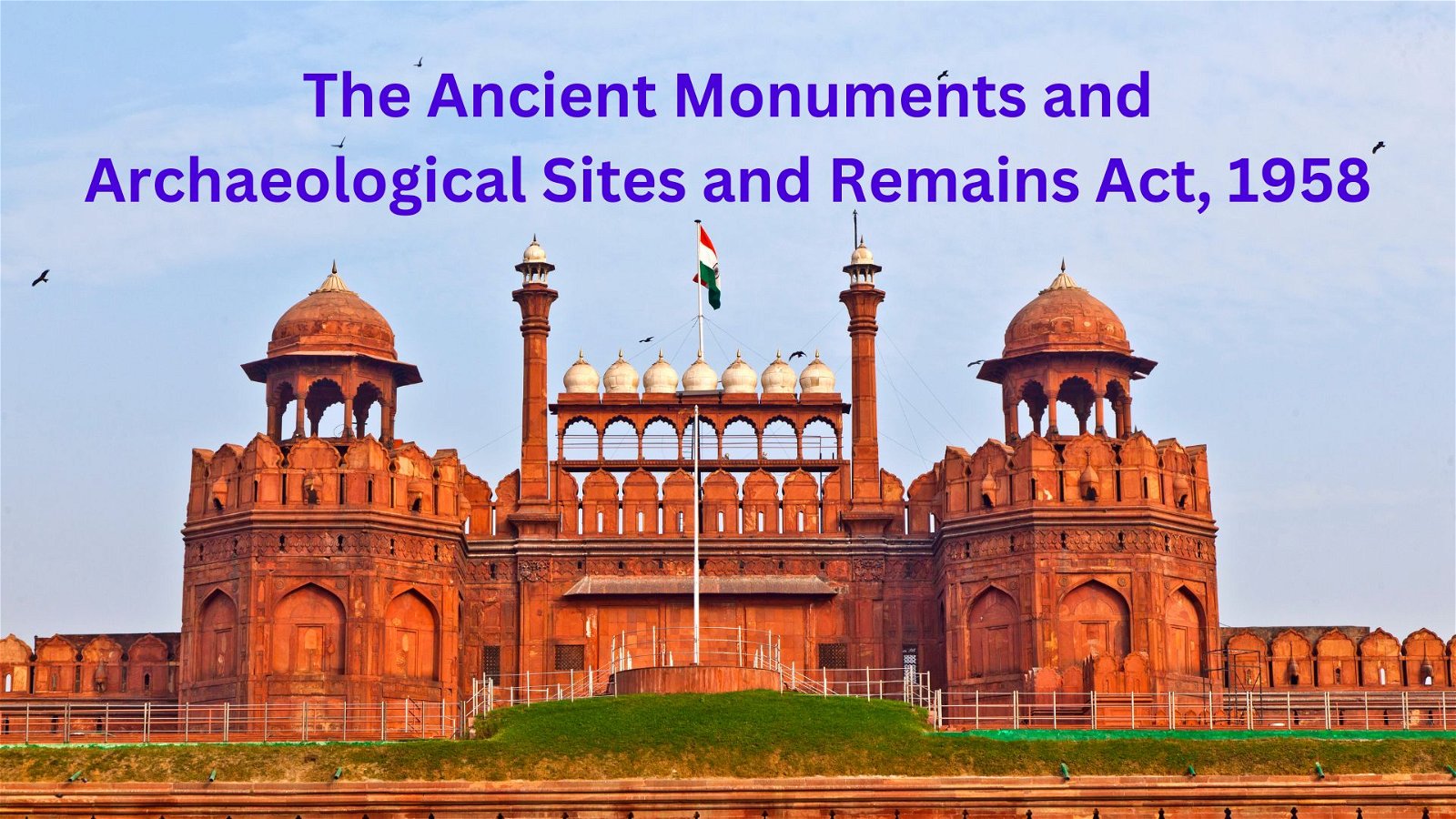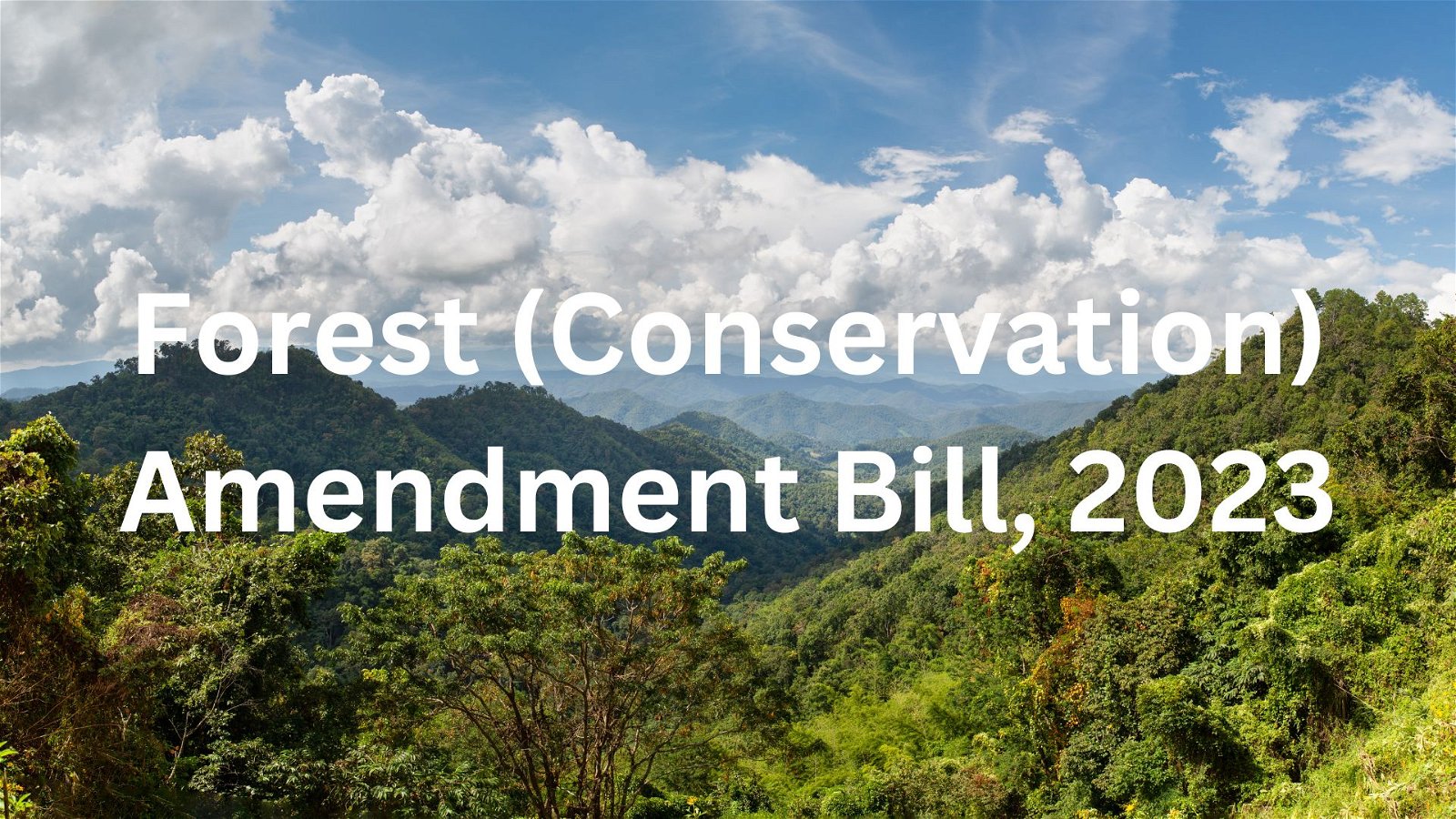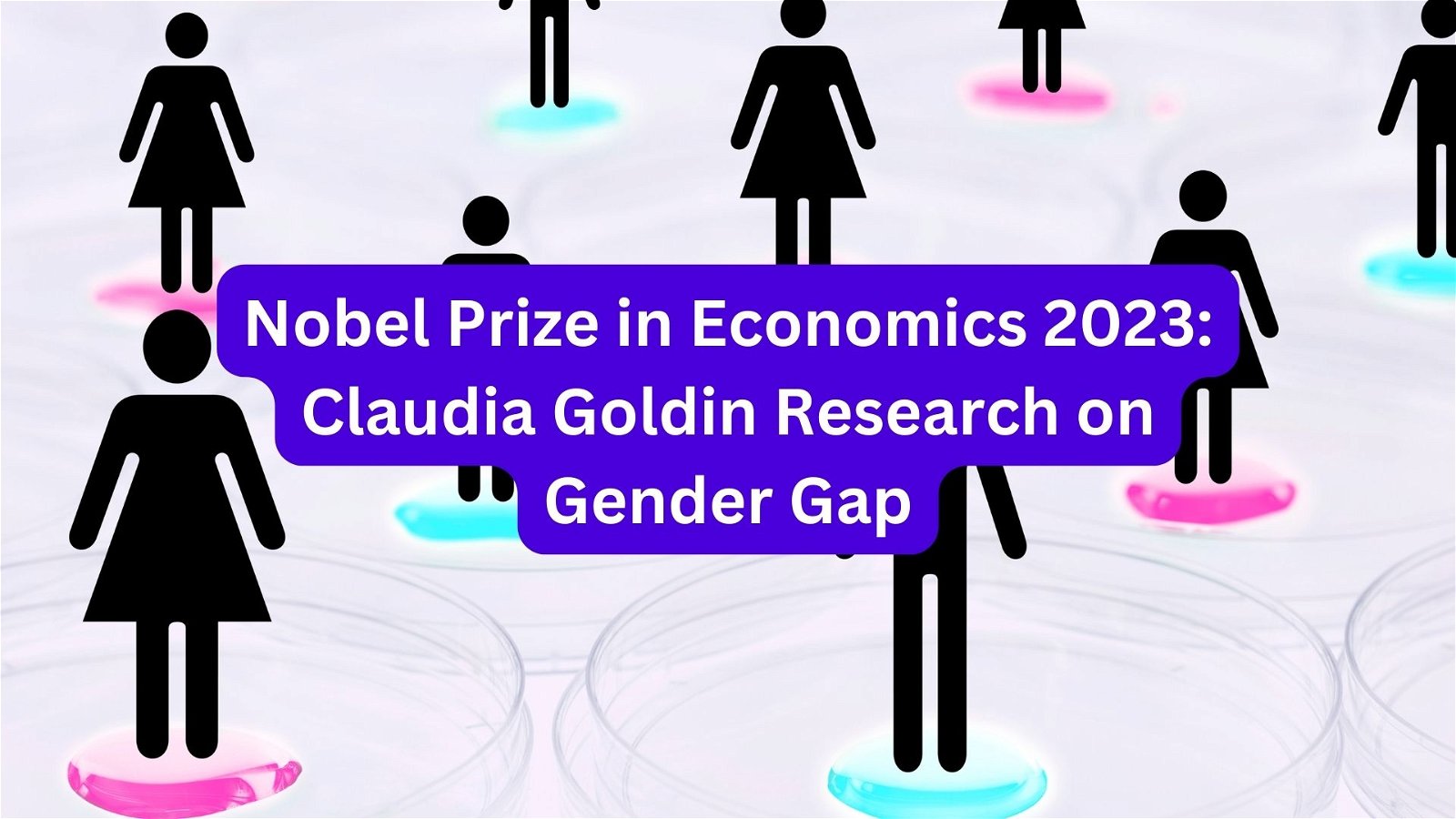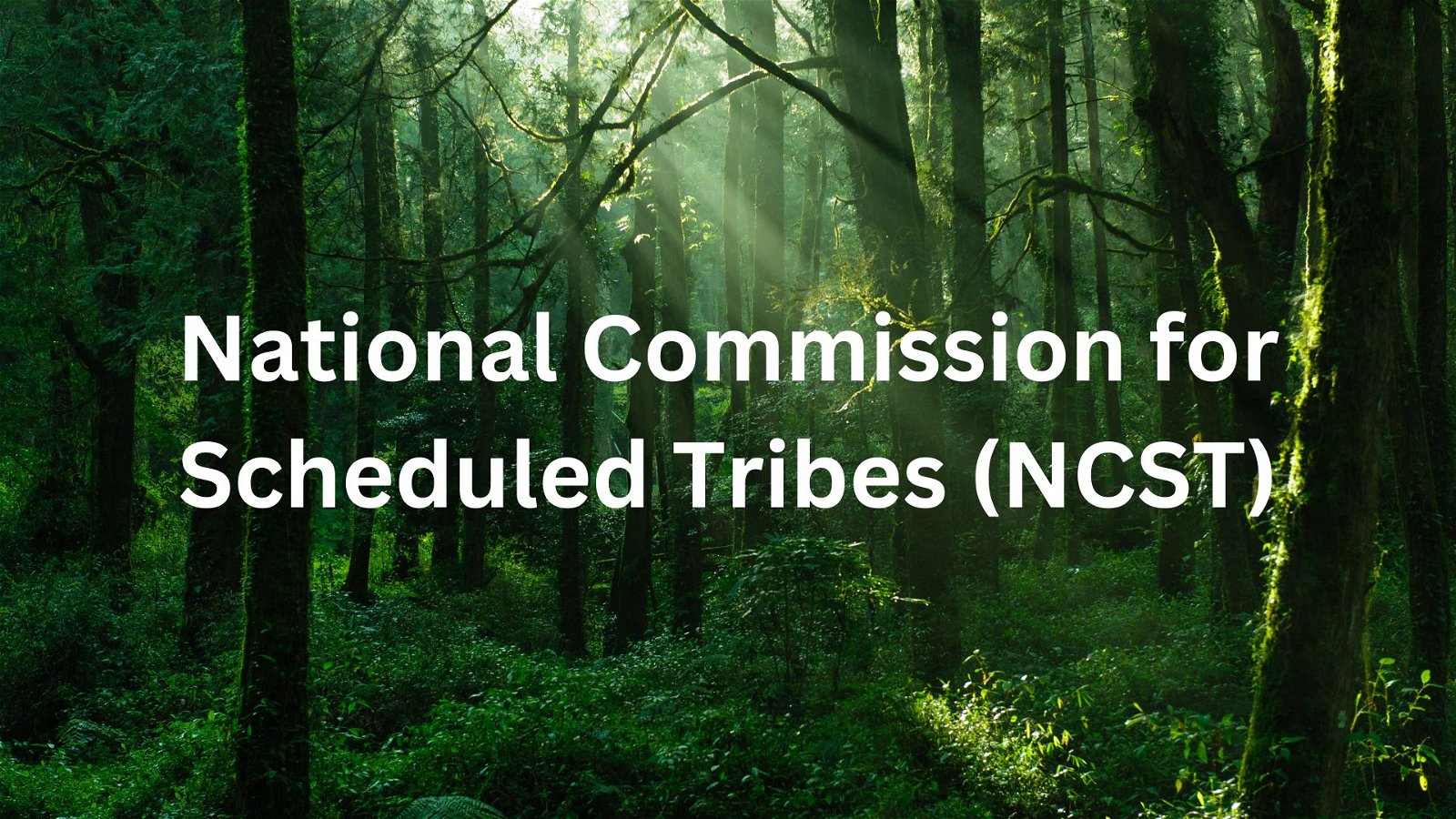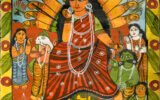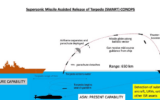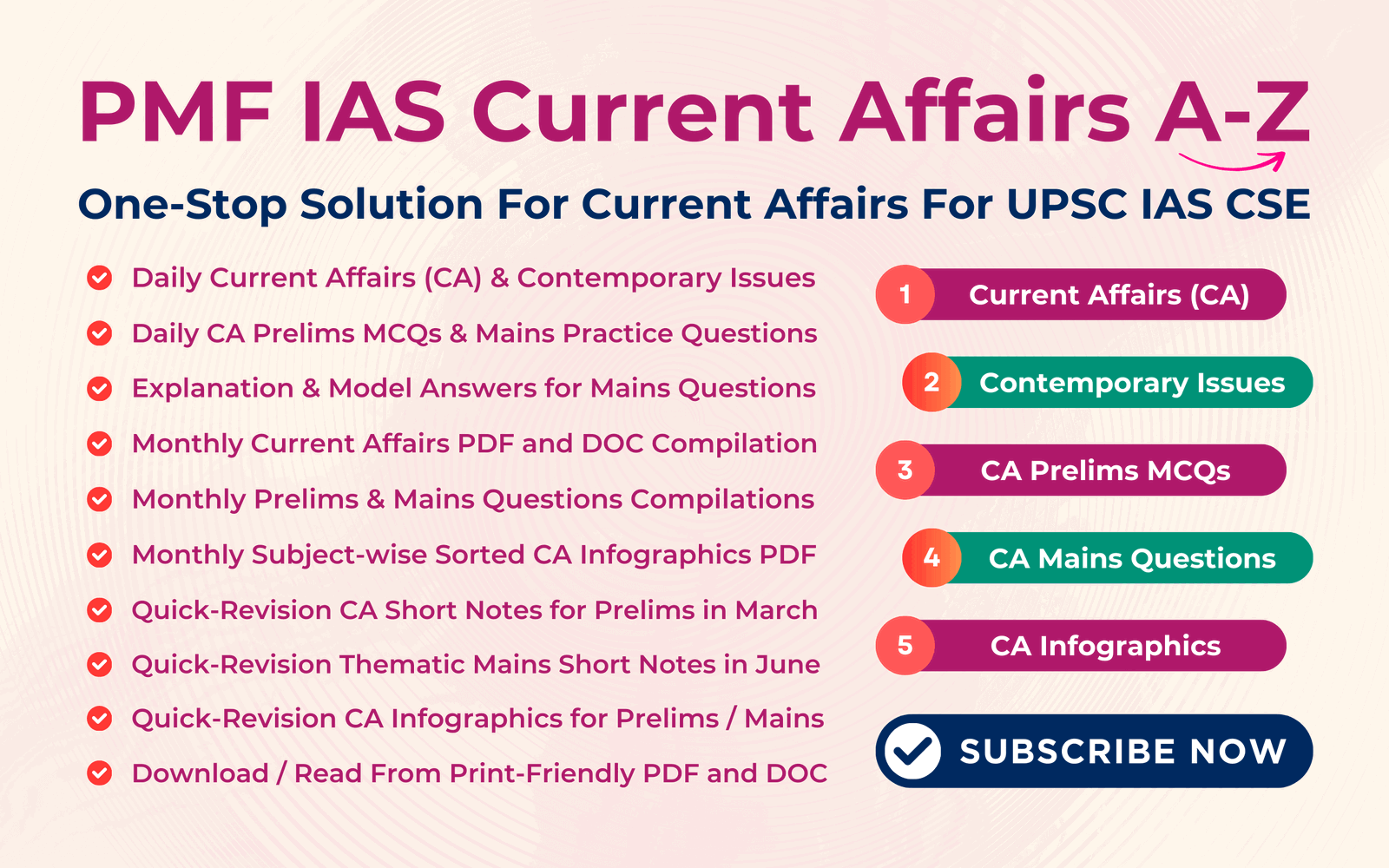
Current Affairs for UPSC Civil Services Exam – March 20, 2024
Subscribers of "Current Affairs" course can Download Daily Current Affairs in PDF/DOC
Subscribe to Never Miss an Important Update! Assured Discounts on New Products!
Must Join PMF IAS Telegram Channel & PMF IAS History Telegram Channel
{GS1 – Geo – EG – Mineral Resources} Ban of White Asbestos
- Context (DTE): The United States Environmental Protection Agency (EPA) announced a comprehensive ban on all forms of the deadly carcinogen asbestos.
- Until this order, chrysotile asbestos, also known as white asbestos, was the last remaining type still legally used in the US.
- Chrysotile is one of the six naturally occurring mineral fibres classified as asbestos.
- It is the only serpentine form of asbestos.
- Chrysotile boasts properties such as high tensile strength, flexibility, and resistance to heat and chemicals, which once made it a popular choice in construction materials.
- Chrysotile Asbestos Usage: Chrysotile asbestos, primarily used in the chlor-alkali industry to produce water treatment chemicals, chlorine bleach, and caustic soda, is now banned.
- Roofing products, including coatings and compounds, accounted for over 80% of asbestos consumption in the US in 2007.
- It is banned in construction in over 65 countries.
- The ban is part of President Biden’s Cancer Moonshot initiative to combat cancer.
- Health Risks: Asbestos is associated with various cancers, Mesothelioma, Pulmonary Hypertension and lung fibrosis.
- Asbestos Abatement Importance: Asbestos abatement remains crucial to prevent future exposure and illness.
|
Cancer Moonshot Initiative
|
{GS2 – Polity – IC – Elections} Model Code of Conduct (MCC)
- Context (IE): With the announcement of dates for lok sabha general elections the MCC has come into effect.
- The Election Commission of India (ECI) announced that the country would vote in seven phases in the 2024 elections.
- The MCC of ECI is a set of guidelines issued to regulate political parties and candidates prior to elections.
- The rules range from issues related to speeches, polling day, polling booths, portfolios, the content of election manifestos, processions, & general conduct, so that free and fair elections are conducted.
- It helps EC in keeping with the mandate it has been given under Article 324 of the IC.
- Art 324 of the IC gives ECI the power to supervise and conduct free and fair elections.
Evolution of MCC
- The origin of the MCC lies in the Assembly elections of Kerala in 1960, when the State administration prepared a ‘Code of Conduct’ for political actors.
- Subsequently, in the Lok Sabha elections in 1962, the ECI circulated the code to all recognized political parties and State governments.
- It was in 1991 after repeated flouting of the election norms and continued corruption, the EC decided to enforce the MCC more strictly.
- After 1991, the ECI enforced the MCC using new means, and in cases of violation, the Chief Election Commissioner exercised constitutional power under Art 324 of the IC to postpone elections.
- In 2013, the SC directed the ECI to include guidelines on election manifestos in the MCC.
Enforcement/Implementation of MCC
- The MCC is operational from the date on which the election schedule is announced until the date of the result announcement.
- Listed Political Parties and Candidates: Listed political parties and candidates are bound to follow the MCC
- Non-Political Organizations: Non-political organizations which hold campaigns favouring a political party or candidate are bound to follow specific guidelines.
- Government-Funded Entities: All organizations, committees, corporations, commissions funded wholly or partially by the Centre or State are bound by the MCC.
- During general elections to the Lok Sabha, the code is applicable throughout the country.
- During general elections to the Legislative Assembly of the state, the code is applicable in the entire State.
- During by-elections, the MCC would be applicable in the area of the concerned Constituency only.
- It is also applicable for State Legislative Council elections from Local Bodies, and Graduates’ and Teachers’ Constituencies.
Guidelines Issued during MCC
Prohibitions
- Criticism of political parties must be limited to their policies and programmes, past record, and work.
- Activities such as using caste and communal feelings to secure votes, criticizing candidates on the basis of unverified reports, bribing or intimidation of voters, etc. are prohibited.
Meetings
- Parties must inform the local police authorities of the venue and time of any meeting in time to enable the police to make adequate security arrangements.
Processions
- If two or more candidates plan processions along the same route, the political parties must establish contact in advance to ensure that the processions do not clash.
- Carrying and burning effigies representing members of other political parties is not allowed.
Polling Day
- Only voters and those with a valid pass from the EC are allowed to enter polling booths.
- All authorized party workers at polling booths should be given suitable badges or identity cards.
- Identity slips supplied by them to voters shall be on plain (white) paper and shall not contain any symbol, name of the candidate or the name of the party.
Observers
- The EC will appoint observers to whom any candidates may report problems regarding the conduct of the election.
- Any complaint regarding elections should be brought to EC observers, Returning Officer, local magistrate, Chief Electoral Officer or the Election Commission itself.
- In response, any directions issued by the EC, Returning officer, District Election Officer shall be strictly complied with.
Party in Power
- The MCC incorporated certain restrictions in 1979, regulating the conduct of the party in power.
- Ministers must not combine official visits with election work or use official machinery for the same.
- The party must avoid advertising at the cost of the public exchequer or using official mass media for publicity on achievements to improve chances of victory in the elections.
- The ministers and other authorities must not announce any financial grants, or promise any construction of roads, provision of drinking water, etc.
- Other parties must be allowed to use public spaces and rest houses, and these must not be monopolized by the party in power.
Election Manifestos
- The election manifesto shall not contain anything against the ideals & principles enshrined in IC.
- Political parties should avoid making promises that are likely to vitiate the purity of the election process or exert undue influence on voters.
- Manifestos should reflect the rationale for promises and broadly indicate the ways and means to meet the financial requirements for it.
- Manifestos shall not be released during the prohibitory period, as prescribed under Section 126 of the Representation of the People Act 1951, for single or multi-phase elections.
Some Recent Additions to the MCC
|
Is the MCC Legally Enforceable?
- Though the MCC does not have any statutory backing, it has come to acquire strength in the past decade because of its strict enforcement by the EC.
- However, the ECI argues against making it legally binding.
- Elections must be completed within a relatively short time or close to 45 days and judicial proceedings typically take longer, therefore it is not feasible to make it enforceable by law.
Criticisms of the MCC
Ineffectiveness in Curbing Malpractices
- The MCC has failed to prevent electoral malpractices such as hate speech, fake news, money power, booth capturing, voter intimidation, and violence.
- ECI is also challenged by new technologies and social media platforms that enable faster and wider dissemination of misinformation and propaganda.
Lack of Legal Enforceability
- MCC is not a legally binding document and relies merely on moral persuasion and public opinion for compliance.
Interference with Governance
- MCC imposes limitations on policy decisions, public spending, welfare schemes, transfers, and appointments.
- ECI is often criticized for applying the MCC too early or too late, affecting development activities and public interest.
Lack of Awareness and Compliance
- It is not widely known or understood by voters, candidates, parties, and government officials.
Weak response and delayed action
- ECI’s capacity for response to inappropriate statements by powerful political actors has been weak or delayed.
- Hence, political actors are regaining the confidence to flout the MCC without facing the consequences.
Lack of power to disqualify candidates
- The ECI does not have the power to disqualify candidates who commit electoral malpractices.
- At best, it may direct the registration of a case.
Inability to de-register political parties:
- The ECI does not have the power to deregister any political party for electoral violations.
- This raises concerns about the accountability of political parties and the lack of consequences for their actions.
Reforms suggested for the effective functioning of the MCC
- Legal enforcement: The Standing Committee on Personnel, Public Grievances, Law and Justice (2013) that the MCC be made legally binding by including it as a component of the RPA, 1951.
- Enforcement through other measures: Certain provisions of the MCC may be enforced through invoking corresponding provisions in other statutes such as the IPC 1860, CrPC 1973, and RPA 1951.
- Law Commission recommendation (2015): The ruling party generally releases GOI-sponsored advertisements highlighting its achievements before the announcement of MCC, which gives it an unfair advantage over other parties and candidates.
- It suggested imposing a ban on such advertisements for up to six months before the expiry of the House/Assembly to ensure a level playing field for all.
- Use of technology: Technology-based resources, such as AI-based systems, can be utilized to prevent violations of MCC through social media platforms.
- Independence of ECI: The ECI should be granted greater independence similar to the Comptroller and Auditor General (CAG) to enable it to take more stringent actions for the implementation of MCC.
{GS2 – Polity – IC – Parliament} Nominated Members of Rajya Sabha
- Context (IE I TH I LM): Philanthropist and former Infosys Foundation chairperson Sudha Murty, 73, is the 12th nominated member in the Upper House of Parliament.
- Murty is also the third woman among the nominated members, with her inclusion on International Women’s Day.
Nominated Members in Rajya Sabha
Constitutional Provisions and Conditions
- Article 80 of the IC–
- The Council of States shall consist of-
- Twelve members to be nominated by the President and
- Not more than two hundred and thirty-eight representatives of the States and of the UTs.
- Clause 3 of the article lays down the qualifications for the appointment.
- The Council of States shall consist of-
- They are nominated by the President of India in the field of art, literature, science and social service.
- He should be a citizen of India above 30 years of age and possessing such other qualifications as may be prescribed by law of Parliament.
- The nomination of members to rajya sabha was borrowed by the IC from Ireland.
- A member who is elected/nominated for a full term serves for a period of six years.
- A nominated member can join a political party within six months of their nomination.
- Under the Tenth Schedule, a nominated member is disqualified for being a member of the House if they join any political party after the expiry of six months from the date on which they are nominated.
- Classical dancer and theosophist Rukmini Devi Arundale was the first woman in Indian history to be nominated as a member of the Rajya Sabha (1952-56 and 1956-62).
Role of nominated members
Powers and privileges
- Nominated members of Rajya Sabha enjoy all the powers and privileges to which the elected MPs are entitled.
- They can take part in the proceedings of the House in a normal manner.
- So far, none of the nominated member has been inducted into the Council of Ministers.
- A nominated member has also been exempted from filing his assets and liabilities under Section 75A of the RPA, 1951.
- RPA,1951 requires the elected member to do so within 90 days of their making or subscribing oath/affirmation.
Election of President and Vice-President
- Nominated members are not allowed to vote in the election of the President.
- They do have the right to vote in the election of the Vice-President.
Significance of nomination
- The rationale behind this principle of nomination is to provide eminent persons a place in the Rajya Sabha without going through the process of election.
- By nominating them to Rajya Sabha, the state not only recognises their merit but also enables them to enrich the debates by their expertise and knowledge that they have in different areas.
Criticisms
Poor attendance
- There has been criticism that several nominated members have poor attendance and do not appear to show much interest in legislative work.
- Cricketer Sachin Tendulkar, actor Rekha, and businesswoman Anu Aga have faced criticism in recent years.
Politicisation of the nominated category
- Over time, the high ideal of the nomination came to be eroded.
- Ruling dispensations have repeatedly used the nominated category to shore up their numbers in the House, to dispense favours, and to get their preferred individuals into Parliament.
- While a nominated member can join a political party within six months of taking his/ her seat, even those who remain technically independent are assumed to be aligned with the ruling regime.
Sudha Murty
|
{GS2 – Vulnerable Sections – Migrants} Ration Cards to Migrants
- Context (DTE): The apex court ordered governments to issue ration cards to 80 million persons under the National Food Security Act (NFSA) 2013.
- These are registered on the eShram portal but do not possess the cards.
- Notably, the coverage under the NFSA is to be determined based on the latest census.
- As the 2021 census has not been undertaken, coverage continues to be based on the 2011 census, even though the population has increased.
- It led to the exclusion of more than 100 million people from the purview of the food security net.
- As coverage has not been increased, most states have exhausted their quotas under the NFSA and are thus unable to issue new cards.
One Nation One Ration Card (ONORC)
|
For more details, visit > NFSA
{GS2 – Vulnerable Sections – Women} Gender Pay Gap
- Context (IE): Earlier this month, a World Bank Group report found that globally, women earn just 77 cents for every dollar paid to men.
- According to the ILO, the Gender pay gap is defined as the difference between the average wage level of all women and all men working in the labour market.
- It is distinct from the concept of “equal pay for equal work”.
- Variation in method leads to varied data based on daily/hourly/monthly wage.
Reasons behind Gender Pay Gap
- Gendered notion of work: This leads to unpaid care and household work.
- ILO: Global labour force participation rate for women is 47% against 72% of men. In India (2011 Census) workforce participation rate for women is 25.51% against 53.26% for men.
- Glass ceiling: The ILO’s Women in Business and Management report found that “far fewer women than men are in management and leadershisp positions, especially at higher levels.”
- Low participation in STEM: A 2013 survey from Georgetown University found men dominate Engineering and computer science, while the 10 least remunerative professions—in fields like arts and education—are dominated by women.
- Overconcentration of women in Part-time work: In as many as 73 countries (based on 2018 data), women outnumber men as part-time workers. Part-time work does not always provide benefits that are proportional to those of full-time work.
- Motherhood penalty: Women are unfairly disadvantaged in terms of their career growth when they take breaks to have and care for children.
- Other institutional and socio-economic factors: Patriarchy, lower investments in women’s education, and issues of safety on commutes and at the workplace also play a significant role.
{GS2 – Vulnerable Sections – Women} Global Gender Gap 2023
- Context (IE): Closing the gender gap is imperative for financial inclusion.
- Measures the current state and evolution of gender parity.
- Released annually by the World Economic Forum (WEF) since 2006.
- Four key dimensions:
- Economic Participation and Opportunity,
- Educational Attainment,
- Health and Survival,
- Political Empowerment.
Findings
- Iceland is a top performer, with a 90% gender gap closed.
- India’s rank: 127 out of 146 countries (An improvement of eight places).
- India has attained 36.7% parity in economic participation, it closed the 64.3% overall gender gap.
- India has attained parity in enrollment across all levels of education.
- India has attained 25.3% parity in political empowerment.
{GS3 – Agri – Tech} New Rice Variety KKL(R)3
- Context (TH): Pandit Jawaharlal Nehru College of Agriculture and Research Institute (PAJANCOA & RI) introduced a new paddy variety called KKL(R)3. This marks the institute’s third paddy variety that has developed so far.
Need
- Over the last twenty years, obtaining water supply during the kuruvai season in the delta region has become increasingly difficult.
- As a result, many farmers resort to using deep borewells, which often yield salt water.
- Existing kuruvai paddy varieties are not tolerant to salt; instead, they are susceptible to it affecting their growth, branching, and flowering timing & an overall yield of the crops.
About KKL(R)3
- KKL(R)3 is designed to be salt tolerant and is ideal for the short-term kuruvai season. It has a maturity period of 110-115 days.
- It is specifically developed for cultivation in the coastal delta region.
- In salt-affected regions, the KKL (R) 3 paddy variety has shown grain yields ranging from 3,435 kg per hectare to 3,500 kg per hectare.
- Under normal conditions, the KKL (R) 3 variety has recorded an average yield of 6,420 kg per hectare.
|
{GS3 – Envi – CC} WMO’s State of the Climate report
- Context (IE | DTE | DTE): On March 19, the World Meteorological Organization (WMO) released its annual State of the Climate report, which highlights significant climate trends and events.
- 2023 was reported as the hottest year on record, with multiple records broken across various climate indicators.
- These indicators include greenhouse gas levels (GHGs), surface temperatures, ocean heat, sea level rise, Antarctic Sea ice cover, and glacier retreat.
Greenhouse Gases
- GHG concentrations reached record-high levels in 2022, based on data from 1984 to 2022.
- Greenhouse gases such as Carbon dioxide, methane, and nitrous oxide trap solar radiation, contributing to global warming.
- Among these gases, the rate of increase of methane was the second highest on record and the highest on record for nitrous oxide.
Surface Temperature
- In 2023, the global average temperature was 1.45 degrees Celsius higher than pre-industrial levels, marking a record high.
- Higher GHG levels, along with El Nio occurrences, contributed to the rise in temperature.
|
Ocean Heat Content
- Oceans have absorbed about 90% of the additional heat trapped by GHGs since 1971.
- This led to a steady increase in ocean temperatures and heat content.
- In 2023, ocean heat content reached its highest level in the 65-year observational record.
Marine Heat Waves
- Warmer temperatures caused a significant increase in global ocean heatwaves, with coverage reaching 32%.
- Marine heatwaves occur when surface temperatures of a particular region of a sea rise 3 or 4 degrees Celsius above average for at least five consecutive days.
Antarctic Sea-Ice Extent
- Antarctic sea-ice extent hit a record low of 1.79 million km2 in February 2023, the lowest since satellite records began. The extent remained at a record low from June to early November.
- In September, the annual maximum sea-ice extent was 16.96 million km2, which is 1.5 million km2, well below the average from 1991 to 2020.
Glacier
- During the hydrological year 2022-2023, the world’s reference glaciers experienced unprecedented ice loss. Glaciers in North America and Europe were severely affected.
- The annual mass balance of reference glaciers reached a new low of -1.2 m w.e. in 2022-2023.
Sea-level rise
- It also reached a record high in 2023 since 1993. This is due to continued ocean warming as well as the melting of glaciers and ice sheets.
- The rate of increase went up from 2.13 millimetres per year (mm/yr) from 1993 to 2002 to 4.77 mm/yr from 2014 to 2023.
Ocean Acidification
- The ocean absorbs approximately 25% of the yearly emissions of human-produced carbon dioxide.
- leading to ocean acidification, which harms marine life and ecosystems.
- The UN IPCC reported that ocean acidity is at its lowest in 26,000 years, but regional variations exist.
- The WMO emphasises that long-term, detailed observations are crucial for understanding and addressing ocean acidification‘s impact.
Ocean acidification
pH scale
|
{GS3 – S&T – IPR} How do Trademarks Work?
- A trademark is a symbol, design, word, or phrase that is identified with a business.
- Registering a trademark allows its owner to claim “exclusive rights” to its usage.
Trademarks Act of 1999
- It governs the regime of trademarks and their registration in India.
- It guarantees protection for trademarks registered with the Controller General of Patents, Designs, and Trademarks (trademark registry).
- Once registered, it is valid for 10 years and can be renewed by the owner periodically.
- Use of someone’s registered trademark or similar mark amounts to a violation.
- Section 11 (1) provides grounds for a refusal to register trademarks of similar trademarks.
- Section 11 (2) provides grounds for a refusal if the already registered trademark has a well-known reputation and the second trademark can take undue advantage of it.
- Section 47 entails the removal of trademarks from the register and imposing limitations on the grounds of non-use.
Passing off
|
{GS3 – S&T – Space} Agnibaan Suborbital Technology Demonstrator (SOrTeD)
- Context (TH): Chennai-based space startup Agnikul Cosmos Private Limited is set to launch its first rocket, the Agnibaan Suborbital Technology Demonstrator (SOrTeD).
- The launch will take place from the Satish Dhawan Space Centre.
- Agnibaan SOrTeD is a demonstration mission aimed at showcasing the technology and capabilities of the rocket.
- This is a sub-orbital launch and it is not a sound rocket.
Highlights of the Agnibaan SOrTeD
- India’s first launch from a private launchpad.
- India’s first semi-cryogenic engine-powered rocket launch.
- The world’s first launch of a rocket with a single-piece 3D printed engine, designed and built locally.
- India’s first liquid oxygen-kerosene rocket flight.
- Agnikul’s rocket is the second privately developed rocket in India.
|
About Agnikul Cosmos
- It was founded in 2017 by Srinath Ravichandran, Moin SPM, and Satya Chakravarthy.
- It became the first company in India to sign an agreement with ISRO under the IN-SPACe initiative in December 2020.
- AgniKul Cosmos Private Limited was incubated out of National Centre for Combustion R&D of IIT Madras.
|
{Prelims – Awards} Sangita Kalanidhi Award
- Context (IE): Carnatic classical vocalist Thodur Madabusi Krishna has been conferred the Sangita Kalanidhi award –by the Madras Music Academy.
- Krishna is famous for his ‘innovations’ in the method of presenting his concerts in the middle of a concert.
- Other Awards conferred on him:
- The Ramon Magsaysay Award (2016) in recognition of ‘his forceful commitment as artist and advocate to art’s power to heal India’s deep social divisions’,
- The Indira Gandhi Award for National Integration (2017) for his services in promoting and preserving national integration in the country.
- The Professor V. Aravindakshan Memorial Award (2017) for connecting Carnatic music with the common man.
Sangeetha Kalanidhi Award
- The award is considered the highest recognition for excellence in Carnatic music.
- It was conceived in 1942 by the then-President of the Madras Music Academy, KV Krishnaswami Iyer.
- It is conferred by The Music Academy, Madras, one of the oldest and most respected institutions in the field of Indian classical music.
- The Sangita Kalanidhi Award is presented annually during the December Music Season in Chennai.
- The recipient delivers a memorable lecture demonstration as part of the award ceremony.
- No posthumous award has been presented since the inception of the award.
Carnatic music
Difference between Carnatic and Hindustani Music
|
{Prelims – Sci – Bio – Diseases} Liver Fluke Parasite
- Context (DTE): Liver fluke parasite found in southern California’s Colorado River.
- Also called Heterobilharzia americana, it infects dogs when they wade or swim in freshwater inhabited by infected snails, which serve as the intermediate host.
- The parasite enters the dog’s body through the skin and migrates to the veins of the intestinal lining.
- It then develops into an adult and mates, laying eggs that can affect the lungs, spleen, liver, and heart.
- This condition is known as canine schistosomiasis, causing severe debilitation.
Liver fluke
- Liver flukes are parasitic worms that cause a disease.
- Habitat: It primarily parasitizes the liver of various mammals, including humans. It can also be found in bile ducts, gallbladder, and liver parenchyma.
- Pathological Effects: Liver flukes induce pathological lesions in the liver and associated organs, leading to parasitic diseases.
- Movement: They are capable of moving along the blood circulation, allowing them to migrate to different parts of the liver and associated structures.
- Life Cycle: Liver flukes have complex life cycles that typically involve 2 or 3 different hosts. They have free-living larval stages in water, indicating an aquatic phase of their life cycle.

Colorado River
|

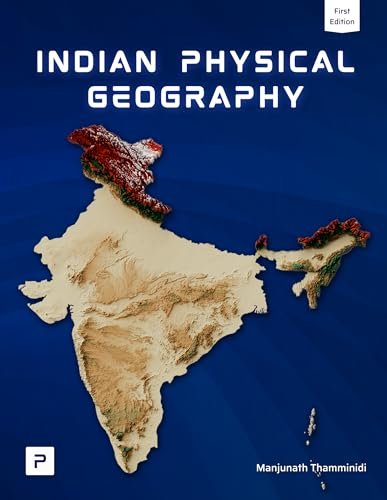
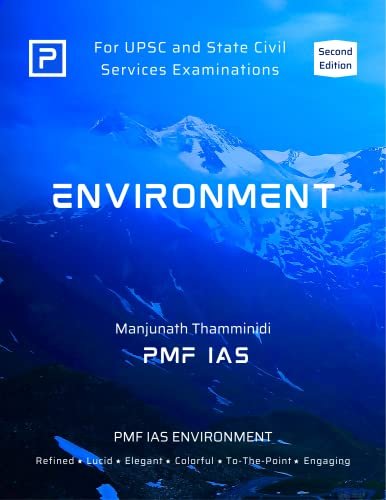
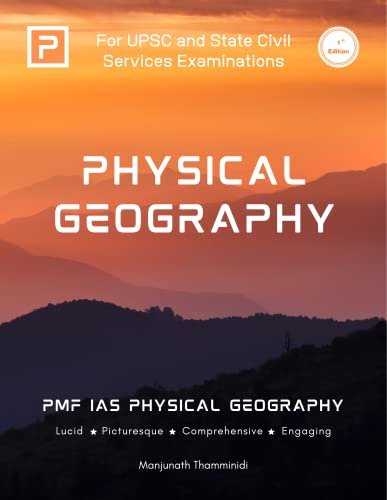
![PMF IAS Environment for UPSC 2022-23 [paperback] PMF IAS [Nov 30, 2021]…](https://pmfias.b-cdn.net/wp-content/uploads/2024/04/pmfiasenvironmentforupsc2022-23paperbackpmfiasnov302021.jpg)



